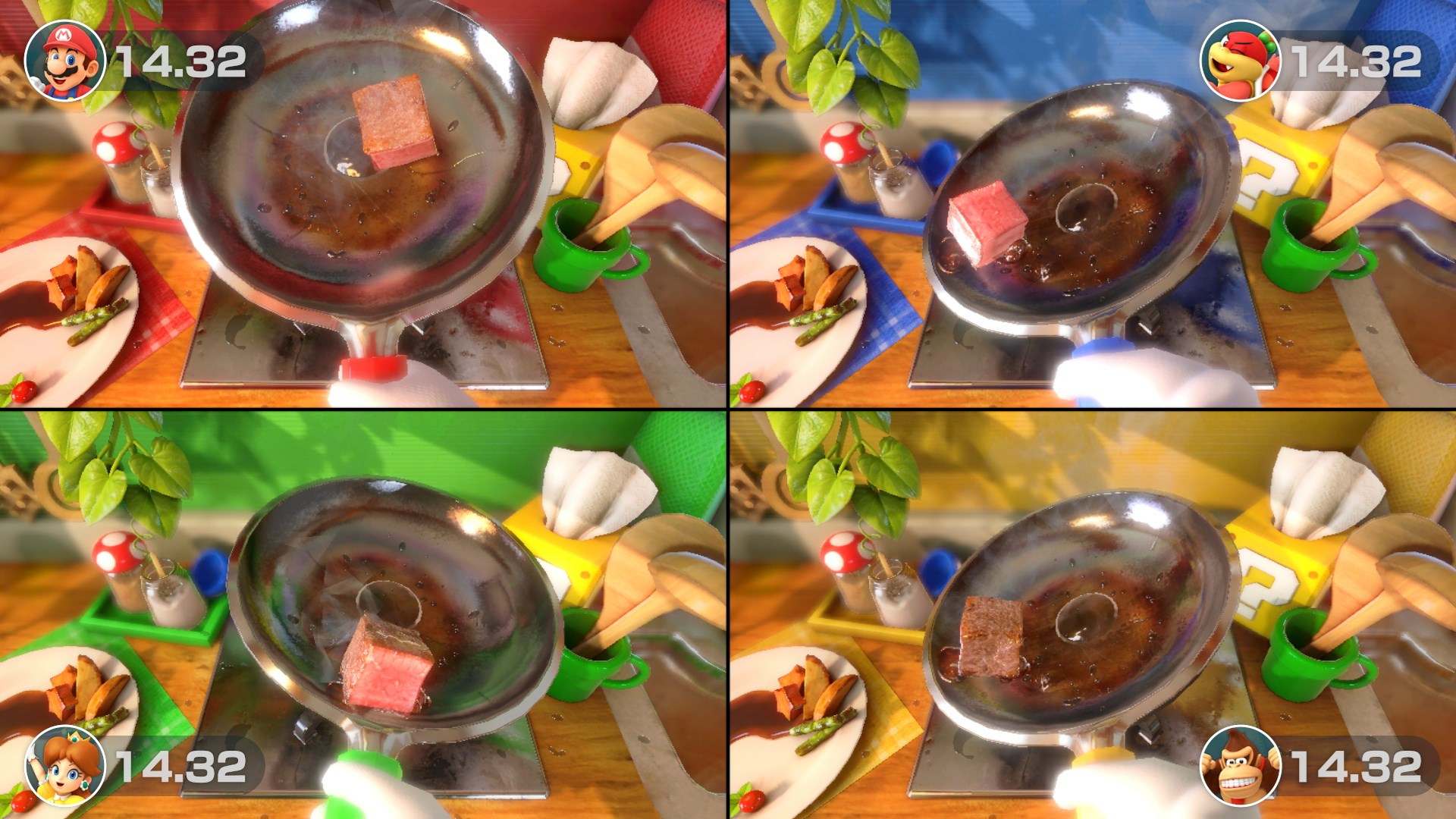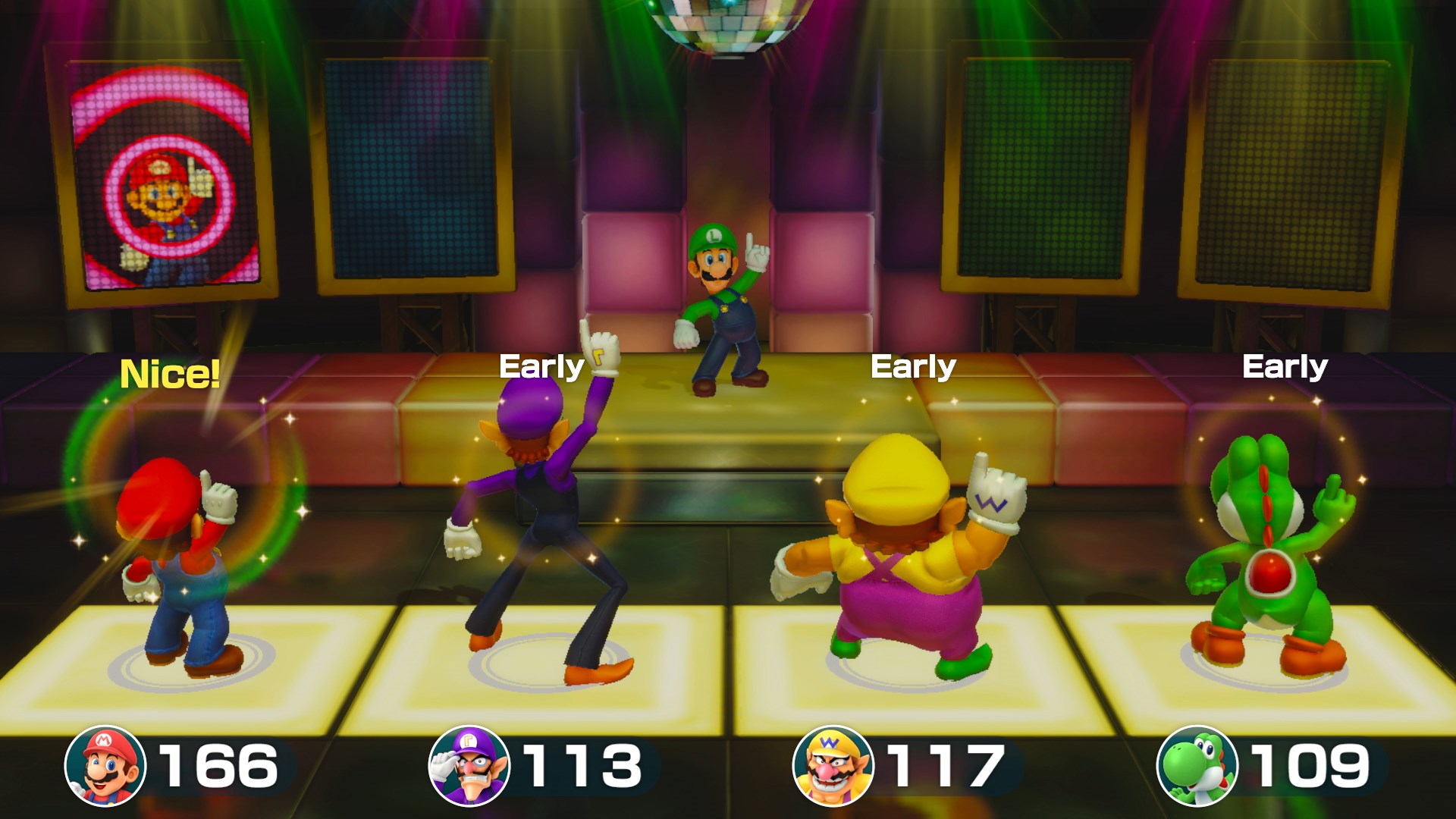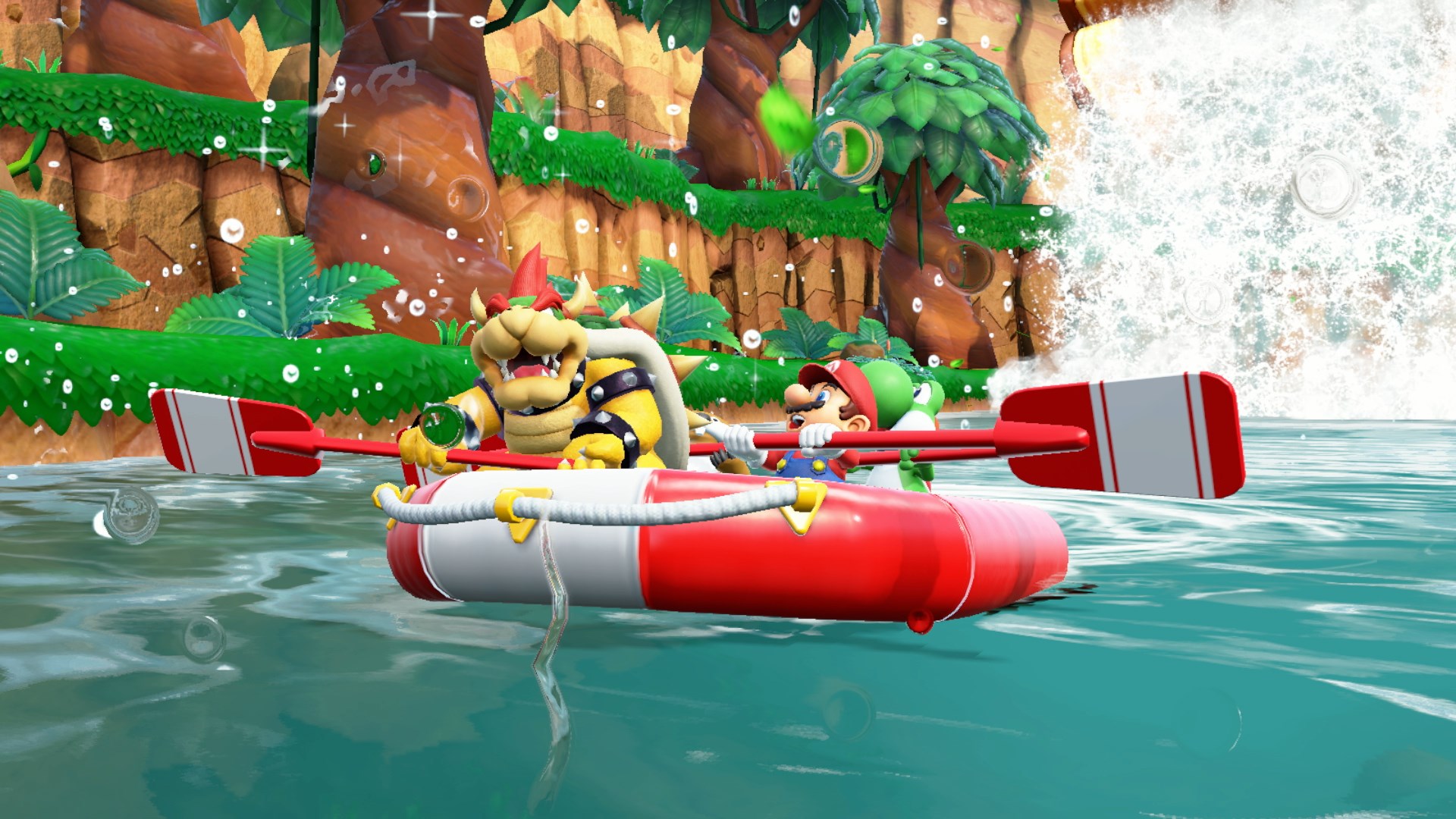It’s hard to pinpoint exactly where the Mario Party series lost the plot. Was it during the waggle era of the Wii? Was it during its ill-fated tryst with the 3DS? Was it the moment the developers decided to introduce a car into the mix? Or was it even earlier, when Mario Party 6 came bundled with a microphone?
Regardless of when it happened, the simple truth is that there hasn’t been a Mario Party game that really feels like a Mario Party title in an incredibly long time.
Mario Party: The Top 100 was our last, best hope at this; a title that promised to collect the best minigames from across all of the titles, packaging them in an easy-to-digest way. It fell short. Super Mario Party, however, does not. It’s the first must-have Mario Party title in years, and it’s incredibly ambitious for a party game.
Party Time
As you jump into the experience for the first time, you’ll be asked to do an initial setup where you select the number of players, the characters they’ll play as, and how many consoles you’ll be using. You’ll do this every time you boot up the game — which is somewhat annoying given that it makes any kind of pass and play gameplay difficult if folks want to play as their favorite characters.
After a short initial tutorial, you’re free to roam around a main hub area that links you to all the different game modes. As you play each for the first time, the next one will unlock, which is a bit frustrating if you want to play a specific game mode to start.
Your main menu is a “Party Pad,” a little screen that serves as a way to quickly start a game, consult tutorials, and check on your progress.
Interestingly, the game’s Party Pad system and a number of other aspects of the game suggest it may have originally been in development on the Wii U.
Aside from the Party Pad, there are a number of minigames that take advantage of asymmetrical play with two Switch systems. This is something that would have been possible with the use of a single Wii U and its Gamepad. The game’s fonts and color scheme used in the menus match the Wii U style, rather than what we generally see on the Switch.
Image via Nintendo
One of the first, most disappointing things you’re bound to notice about the game is that for the main Mario Party mode, there are only 4 boards to play, one of which is hidden. None of them have gimmicks that are particularly engaging or special, and that’s a shame given the fact that the core Mario Party gameplay here is amazing.
The game features 80(!) minigames, and though a few of them pay homage to classics of the series, they’re all 100% new. It would have been nice to see a few advanced boards that require more strategy. Perhaps there will be some DLC down the line.
Outside of that, the main mode is everything you probably expect. Roll a die, collect coins, buy stars, and learn to hate your friends. The addition of character-specific dice that augment your chances of landing on a specific space adds a bit of strategy to the mix, but it’s still the same wonderful random game we all know and love.
Oodles of Extras
Were the main mode all that Super Mario Party included, it’d be a passable-but-forgettable entry in the series. Fortunately, the game packs in so much more. In fact, I imagine that I’ll be playing the game’s other modes more frequently than the classic board game mode.
A clear standout here is the Partner Party mode, a 2v2 romp that features free movement around a board and allows for much more strategic play. Of course, the goal is still to collect stars. Since you have the ability to split up, one teammate can focus on collecting coins or blocking the other team’s path while the other focuses on collecting items or stars. There is a surprising amount of depth on display here, and I imagine that this will be a mode I come back to often.
Another winner is the River Survival mode, a cooperative adventure that tasks you and three buddies with traversing a branching path, playing minigames and avoiding obstacles in order to make it to the end before time runs out. It’s kind of like a cross between OutRun and Mario Party, and it works way better than it has any right to.
Image via Nintendo
The Sound Stage mode may not be for everyone, but I had a blast playing it. This mode is sort of a Rhythm Heaven or Warioware: Smooth Moves-styled competitive game, featuring only rhythm-based minigames that require you to stand up to play them.
Though the Joy-Cons can be sensitive at times, motion-based rhythm games are never not fun, and Sound Stage mode is no different. As an added bonus, the music on display here (especially the remixes of classic Mario tracks) is pure head-bopping fun.
Super Mario Party also throws a bone to solo players with Challenge Road, a gauntlet of minigame challenges that is unlocked after you unlock all the minigames. It’s incredibly fun, and is the type of game mode that will eat up the better part of your day before you even realize it.
Oh, and speaking of solo play: Though there’s no way to play the classic Mario Party experience online as of yet, the Online Mariothon mode is the perfect blend of engaging and frustrating that will guarantee I stay up until 4am getting more and more angry at children over the internet.
The way it works is actually pretty brilliant — the games featured in this mode are all timed. Either you want to finish a task first (winning a tricycle race, cooking a delicious-looking steak cube), or you want to last as long as possible (avoiding Chargin’ Chucks, outrunning Broozers, dodging Fuzzies in a plane).
Points in Online Mariothon are awarded based on time rather than whether you’ve won or lost, so the lead can swing wildly across the 4 minigames depending on if someone just absolutely airballs a challenge while another person nails it. I didn’t see myself enjoying an online ranked mode for Mario Party (it even gives you a letter grade based on your performance) but, well, here we are.
Image via Nintendo
I’ve saved Toad’s Rec Room for last, since it was my least favorite of the bunch.
Toad’s Rec Room is pretty much a collection of minigames that are slightly more fleshed out than the rest: a miniature baseball game that is actually a blast to play if you have a full group of players, a top-down tank game that is reminiscent of classic Atari titles, a forgettable game where you assemble sprites with your friends, and a puzzle game that tasks you with arranging two Switch consoles beside each other in order to complete an image of a banana.
There’s also a sticker collecting mode, which is something I will never do unless I unlock a really cool sticker by being the best in the world at Online Mariothon.
Party Crashers
There’s a lot to love in Super Mario Party, but there’s also a lot that is missing. Four boards for the main mode seems like not enough, but that isn’t a huge deal given the other game modes.
What is a huge deal is that in order to play with four players, you’ll need four Joy-Cons.
The game doesn’t work with Pro Controllers, or even Joy-Cons used in the grip attachment. Presumably this is to even the playing field for the games that require a gyro sensor, but the Pro Controller has that too! It’s ridiculous that Nintendo is forcing folks to use the Joy-Cons, especially when every other game for the Switch supports multiple control styles. Hopefully this gets patched in later.
My only other major gripe here is the lack of any kind of 8-player mode. I get that Mario Party is traditionally a 4-player game, but 8-player modes have been supported on Nintendo consoles since the Wii U. It’s a shame that they didn’t include any kind of cooperative pass-and-play party mode that supports more than 4 players. It seems like a no-brainer.
Party On
All in all, though Super Mario Party is by no means a perfect game, it succeeded in skyrocketing the Super Mario franchise out of mediocrity and back into the hearts of fans everywhere.
With a couple of tweaks and patches and — dare I hope — free DLC boards down the line, the game could stand alongside series juggernauts like Mario Party 2 and 3. But even if nothing changes, Super Mario Party is a must-have for any Switch owner, and a natural fit for the console.
[Disclaimer: Writer was granted a free code from the publisher for review purposes.]










Published: Oct 8, 2018 01:11 am